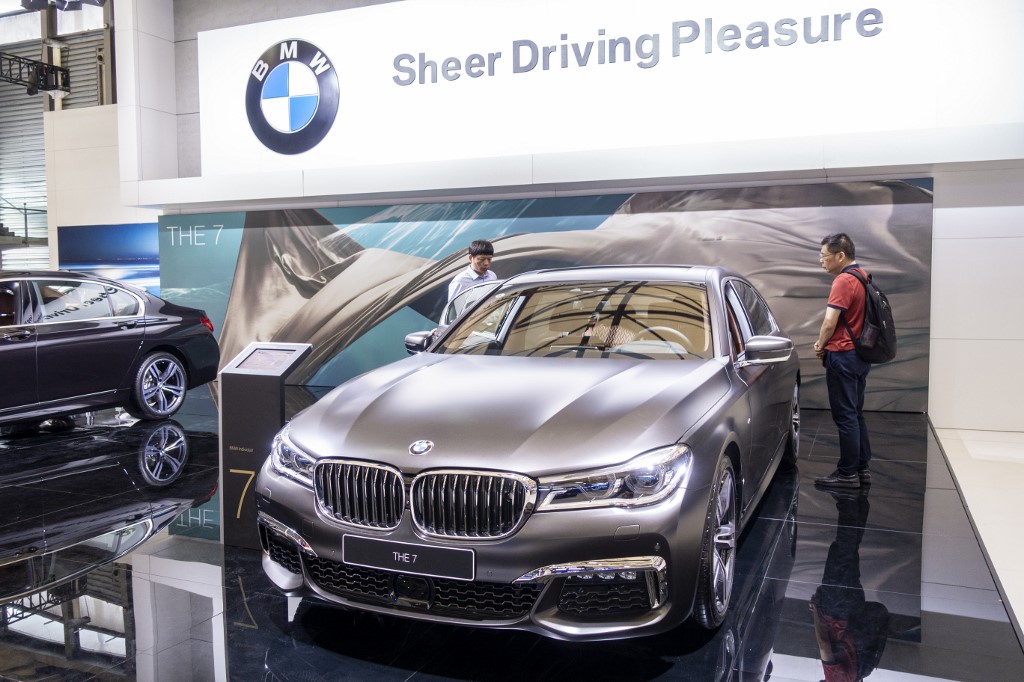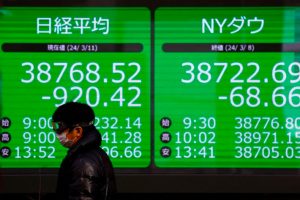(ATF) The debt crisis brewing in car company Brilliance – a joint venture with BMW – has finally emerged, and the company faces bankruptcy. Brilliance bonds are hot potatoes, and Hong Kong-listed subsidiary Brilliance China (01114.HK) also saw its share price plummet.
Brilliance Group has debts of up to 120 billion yuan and creditor banks have established a debt committee. Sina Technology says bankruptcy and reorganisation may be inevitable.
Some of Brilliance Auto’s bonds started a continuous decline from late July. Some of the bonds have seen a drop of nearly 50%.
On August 12, corporate bonds plummeted again. 19 Huaqi 01, 18 Huaqi 01, 18 Huaqi 02, 18 Huaqi 03 and other bonds fell more than 15%, while 19 Huaqi 01 fell 28.65% and 18 Huaqi 01 fell 28.25% in intraday trading.
The following day, the share price of Brilliance Automotive’s Hong Kong-listed subsidiary Brilliance China also plummeted, with an intraday drop of 14.3% – the largest intraday drop since August 2019.
On August 14, after the stock plunge, Brilliance Auto suspended the public auction and trading of multiple bonds under its name on the Shanghai Stock Exchange and only took quotes and inquiries, in order to restrict retail trading of corporate bonds and avoid another sell-off, which would affect the valuation of bonds and stocks.
However, this failed to prevent a fall in bond prices. On that day, bond investors continued to sell on the inter-bank market, causing the “19 Huaqi Bond 01” to fall to a record low of 42 yuan.
Both bonds and stocks fell at the same time, reflecting investors’ concerns about the size of its debt problems and the liquidity of Brilliance Group. They reduced their holdings of cash to avoid further losses.
According to Wind statistics, Brilliance Automotive Group currently has 15 surviving bonds, and a bond stock of 17.573 billion yuan. The scale of bonds maturing in one to three years exceeds 10 billion yuan.
A report issued by the rating agency Oriental Jincheng in June showed that as of the end of March 2020, Brilliance Auto’s total liabilities reached 122.675 billion yuan (with an asset-liability ratio of close to 70%). It had interest-bearing debt of 67.7 billion yuan, exceeding total liabilities. More than half is short-term interest-bearing debt – 48.4 billion yuan – and short-term debt repayment pressure is huge.
At present, its creditor banks have formed a debt committee, with China Everbright Bank and Industrial Bank as the co-chairman. The purpose of this is to coordinate relevant creditors not to draw, suppress or cut off loans, and to carry out debt restructuring for the future.
First China firm to list on NYSE
Established in the early 1990s, Brilliance Auto listed on the New York Stock Exchange as early as October 1992. It was China’s first domestic company to go to Wall Street to raise funds.
At that time, Brilliance Auto’s listing in the United States had great significance. It represented Chinese companies going abroad and was seen as a flag-bearer of Chinese companies’ internationalisation.
Brilliance Auto’s IPO price was $16 a share at the time, and it was expected to issue 5 million common shares and raise $80 million. As a result, the number of shares ordered was as high as 60 million, which was almost 12 times the issuance. And just 34 minutes after opening, 870,000 shares were traded at $20 per share.
However, after May 2002, Brilliance Automotive’s performance began to decline and it suffered losses year after year. The US capital market had not been able to give the firm enough ammunition; the trading volume of US stocks was extremely low, but it had to pay about $1 million in maintenance fees such as accounting and lawyers every year.
On July 5, 2007, Brilliance Auto’s board of directors announced its decision to delist, cancel the American Depositary Shares (ADS) listed on the New York Stock Exchange, deposit the ADS in the company’s depository bank – the Bank of New York. But the company’s listing on the Hong Kong main board was maintained. Thus ended a 15-year journey of going public in the United States.
At present, the group has six vehicle manufacturers, four listed companies (Brilliance China, Shanghai Shenhua, Jinbei Auto, and Xinchen China Power), and more than 160 wholly-owned, holding and equity companies under its umbrella. These involve auto parts, auto finance, new energy and other fields, with total assets of more than 190 billion yuan.
Brilliance is also a joint venture partner with Germany’s BMW in China. BMW Brilliance accounts for 25% of the domestic luxury car market and has a high market position and brand influence.
But Brilliance’s main business – vehicle manufacturing and sales – has consistently underperformed in recent years, especially its own brands. Brilliance China and Brilliance Jinbei Renault are extremely weak. Sina said they are like “clouds and mud” when compared with Brilliance BMW.
Jinbei and Zhonghua shone, then faded
Jinbei Automobile, which has been in existence for 30 years, can be described as having had a glorious history. In 2010, the number of Jinbei passenger cars sold on the market exceeded 1 million, and its share in the light passenger car market was as high as 75%. But after those ‘glory days’, Jinbei began to decline while continuously playing catch-up with competitors such as SAIC Maxus and Jiangling, and its operating conditions deteriorated. In the end, Jinbei Automobile was sold by Brilliance to Renault for the sad price of 1 yuan.
It has been more than two years since ‘Brilliance Renault Golden Cup’ was established, but no products equipped with Renault technology have been launched. Indeed, this arrangement further exacerbated the company’s dilemma.
Statistics from the China Automobile Association show that in 2019, Brilliance Jinbei sold 41,000 vehicles, a sharp drop of 82.36% year-on-year. In the first half of 2020, it sold only 4,000 vehicles. And half a month ago, the Brilliance Renault Gold Cup also reported layoffs. The situation with its self-owned brand Brilliance China was also not optimistic.
Brilliance Zhonghua, meanwhile, used to have two major series of cars and SUVs, with more than 10 models, including many hot-sellers such as Zhonghua Sedan, Zhonghua Zunchi and Zhonghua Junjie. But now, it only has five models on sale and they have had poor performance ratings.
In March 2019, Brilliance Automobile changed its chairman but Brilliance China has not launched any new products. In the first half of this year, the sales volume of Brilliance China was only 3,200 vehicles, with an average monthly sales volume of 500. This was during the epidemic, but sales were still much lower than expected.
With no order in the firm’s operations, Brilliance China decided, at the end of July, to let employees “take turns to work”. Those who took turns at home were only paid the Shenyang minimum wage (1,810 yuan a month). This was like a collective pay cut in disguise and caused strong dissatisfaction among employees.
Moreover, in the first half of the year, Brilliance Auto was “on the list” 13 times – involved in a number of legal proceedings, mainly involving service and loan contracts, sales and processing contracts, plus transportation contracts.
In order to repay debts, on May 22 and July 14 this year, Brilliance Auto sold 600 million shares (nearly 12% of total equity) of its listed company Brilliance China to Liaoning Transportation Investment Group for transaction funds.
Deal with BMW to scale down in 2022
The joint venture BMW Brilliance is unmatched in its importance to Brilliance. After its establishment in 2003, with the successful introduction of the BMW 3 Series, 5 Series and BMW X1 Series, BMW Brilliance’s sales and profits were soaring.
Since 2011, the annual net profit contributed by BMW Brilliance has accounted for more than 90% of the group’s profits. If it were not for BMW Brilliance, the group’s financial report would not have been very good, as Brilliance China’s other businesses lost 1.064 billion yuan in net profit.
Brilliance Group has always emphasised that Brilliance is “the only Chinese auto company that has exchanged technology”. But, apart from introducing BMW’s engine production line, Brilliance has not implemented chassis, engine, gearbox, or intelligence features. Vigorous research and development in new energy and other fields has always lacked independent research and development capabilities. The entire Brilliance Department lacks core technical support.
In 2018, Brilliance and BMW signed an agreement to allow BMW to acquire a 25% stake in BMW Brilliance from Brilliance Auto before 2022. By then, Brilliance’s shareholding will be reduced to 25%. This means that by 2022, Brilliance Auto’s profits from BMW Brilliance will be greatly reduced.
Hard days ahead
So, more difficult days are yet to come.
The Ministry of Industry and Information Technology has dropped Brilliance Auto from the list of firms that will be involved in production of new energy vehicles. So, it will be difficult for the group to follow perhaps the most rosy path in the future.
Brilliance has done nothing in terms of in-vehicle interconnection and autonomous driving. When the equity deal with BMW is completed in 2022, it is unclear how Brilliance Auto will make a profit and how it will reduce its debt. Bankruptcy and restructuring are on the table.
As a key state-owned enterprise in Liaoning Province, local governments and banks will not allow Brilliance to collapse, and will use various methods to ease its liquidity woes.
But the domestic auto market has long been saturated, and various auto companies have become increasingly differentiated in terms of technology and R&D capabilities – and consumers have become more aware of these brands.
If Brilliance Auto cannot “turn over” products and brands, it will be eliminated by the market sooner or later. The stocks of Hong Kong-listed companies such as Brilliance China and Xinchen China Power will inevitably be sold by investors and will eventually become “fairy stocks”, Sina Technology has suggested.
























